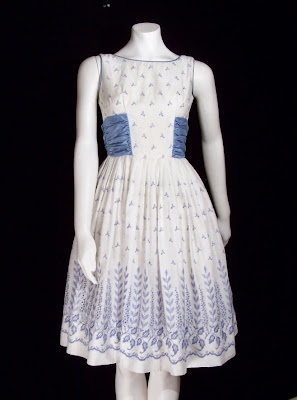There is a certain bit of nostalgia when looking back in time. We often say, "They don't build things like they used to," implying that we paid closer attention to quality and details. This same kind of thinking is also found in pattern making and sewing. There is a general assumption that the way things were done in the past are better then they are now. Some pull out old measurement charts and drafting instructions to recreate the past for a better present. We don't even have to go very far. There is the hope of a stylish outfit made of a 1950's sewing pattern and thinking that it will fit.
Before I go any further, let me say there is nothing wrong with looking backward and trying to understand how things were done. It is a fun exercise to draft a pattern using old instructions or sewing up that vintage pattern. This is about using old body measurement data and pattern drafting instructions to create modern clothing.
There are some key factors that make up a size - height, weight, girth, and shape. I suppose in the 1890s pattern makers and tailors were just beginning to understand the relationships between each of those factors. At least for men's clothing. Women's clothing was still a guessing game requiring customized fit. It wasn't until the 1940s that we began to see the connection to height, weight, and girth. Statistical analysis could finally show that when one factor changes, the others do as well. The studies done by Ruth O'Brien and her committee allowed us to see and understand body proportions and shapes and use that information to predict overall size. This information was not truly implemented until the 1950s and 1960s. Other studies have come along to add to our knowledge. A study in the early 1970s expanded our knowledge of children's body measurements. Another study, SizeUSA, was released in 2004 and greatly enhanced our knowledge of the US population using 3D body scanners.*
If you draft a pattern using older drafting instructions and body measurement charts, you will create something that is based on that time's understanding of body proportions and measurements. If that is your goal, then all is well and good. But if you find a free measurement chart dating back even 50 years, then you are placing your product in the 1950s.
We know this because not only has our understanding of anthropometry increased, but we know that the body measurements of a population change over time. If you are interested in creating your own line, it is in your best interest to obtain the most recent (and reliable) measurement data you can.
*Unfortunately the SizeUSA data is held behind a very expensive lock and key. Access is only available to those willing to pay a pretty hefty sum despite the study receiving tax dollars. Some ASTM body measurement charts have been updated to incorporate the study data. The ASTM children's body measurement chart is a mash-up of data that incorporates multiple studies dating back to Ruth O'Brien's 1941 study and some more modern data.



No comments:
Post a Comment